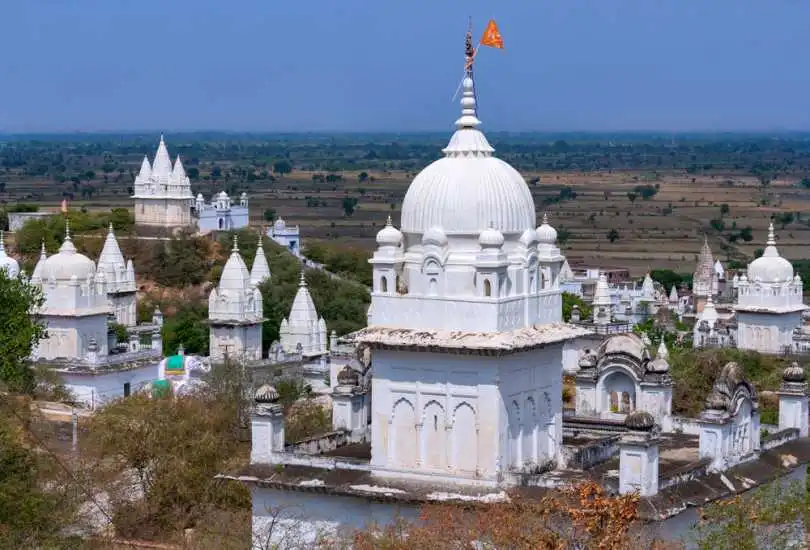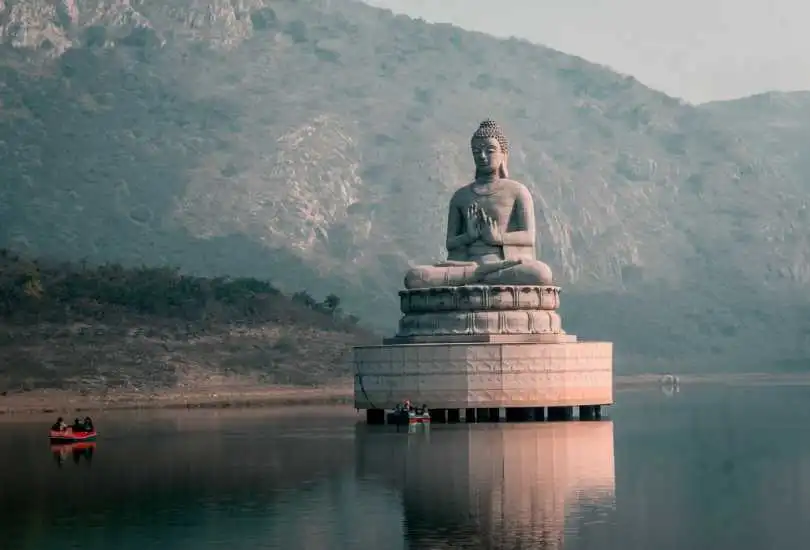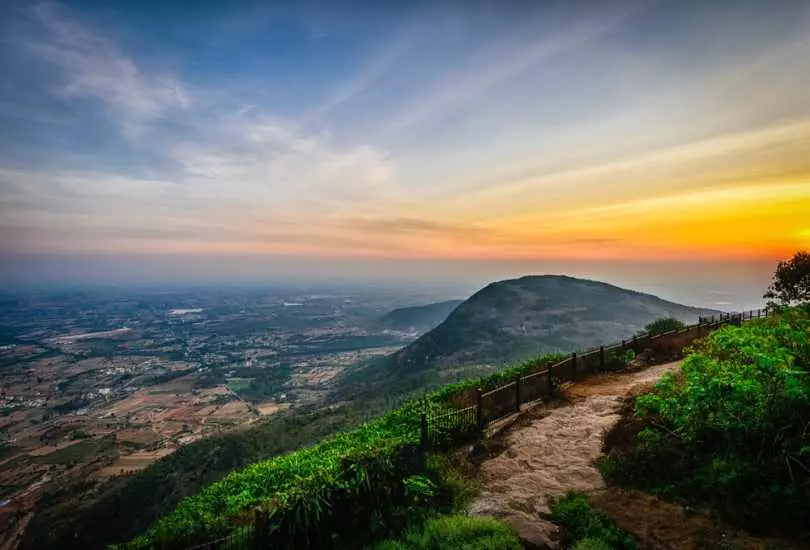Jainism is an Indian religion with a rich cultural history dating back over two thousand years. The Jain community has played an essential part in shaping India’s religious and cultural diversity, and temples built to honor its deities are one of Jainism’s most notable achievements. Jainism temples, also known as Jain mandirs, are essential to Jain culture and religion.
Various Jainism temples are noted for their architectural beauty and religious significance throughout India. These temples of Jainism are historical and cultural landmarks as well as places of worship. Many of these temples are considered old Indian architectural wonders, with intricate carvings, stunning frescoes, and enormous structures that have weathered the test of time.
The Jain community has made enormous contributions to the advancement of Indian art, literature, and philosophy, and the temples of Jainism bear witness to this history. These temples are not just places of worship but also living museums of India’s rich cultural legacy.
Contents
- Famous Jain Temples In India are as follows:
- 1. Ranakpur Jain Temple, Rajasthan:
- 2. Dilwara Jain Temple, Mount Abu, Rajasthan:
- 3. Palitana Jain Temples, Gujarat:
- 4. Shikharji Jain Temples, Jharkhand:
- 5. Gomateshwara Statue and Temple, Shravanabelagola, Karnataka:
- 6. Sonagiri Jain Temple, Madhya Pradesh:
- 7. Kumbhoj Jain Temple, Maharashtra:
- 8. Kundalpur Jain Temple, Madhya Pradesh:
- 9. Bawangaja Jain Temple, Madhya Pradesh:
- 10. Jain Temple, Pawapuri, Bihar:
Famous Jain Temples In India are as follows:
1. Ranakpur Jain Temple, Rajasthan:

Ranakpur Jain Temple is one of India’s most well-known Jainism temples, located in the small town of Ranakpur in Rajasthan. This temple is famous for its stunning architecture and complex carvings, demonstrating the skill and artistry of the artists who built it.
The temple was built in the 15th century and is dedicated to Lord Adinath, the Jain religion’s first Tirthankara. The temple is entirely composed of marble and is an excellent example of ancient Indian architecture. The temple of Jainism is on a high platform with four entrances leading to various areas.
The temple’s main hall, commonly known as the ‘Mandapa,’ is supported by approximately 1400 beautifully carved pillars, each unique. The carvings portray scenes from the Jain scriptures; each post is fantastic. The inner sanctum of the temple, popularly known as the ‘Garbhagriha,’ houses the black marble deity of Lord Adinath.
2. Dilwara Jain Temple, Mount Abu, Rajasthan:

The Dilwara Jain Temple atop Mount Abu, Rajasthan, is one of India’s most well-known Jainism temples. This temple complex comprises five independent temples devoted to a different Jain Tirth. The temples were constructed during the 11th and 13th centuries and are regarded as Jain architectural wonders.
The interiors of the temples of Jainism are embellished with beautiful marble carvings that are regarded as some of India’s best examples of temple design. The sculptures reflect scenes from the Jain texts, such as stories of the Tirthankaras and other notable Jain personalities. The marble used in the temples’ construction is of extraordinary quality, and the delicate intricacy of the sculptures attests to the artists’ talent and expertise.
The Dilwara Jain Temple is an important pilgrimage place for Jains, drawing visitors worldwide to admire its beauty and learn about the Jain religion. The temples’ elaborate carvings and stunning architecture place them among the most spectacular examples of Jainism temples in India, making them a must-see for anybody interested in studying the country’s rich cultural legacy.
3. Palitana Jain Temples, Gujarat:

The Palitana Jain Temples in Gujarat are among the most revered Jainism temples in India. Shatrunjaya Hill, where the temple complex is situated, is thought to be the site where Adinath, the first Tirthankara of Jainism, acquired enlightenment. With more than 800 temples and shrines, the Palitana Temples are the most significant collection of Jainism temples in India in the entire globe.
Beautiful marble carvings of Jain mythology and history may be found inside the temples, which are well-known for them. Each temple has a unique layout and construction, and the entire complex is regarded as a masterpiece of Jain temple architecture. The Palitana Temples are particularly important spiritually for Jains since they think performing sacred rituals and visiting temples can bring spiritual enlightenment.
The Palitana Temples is a renowned pilgrimage destination for Jains worldwide who come to pay their respects and seek spiritual solace. The temple’s magnificent architecture and elaborate sculptures testify to the Jain community’s lengthy cultural history, making it one of India’s most notable Jainism temples.
4. Shikharji Jain Temples, Jharkhand:

Shikharji, in Jharkhand’s Giridih district, is an important pilgrimage site for Jainism temples in India. It is stated that 20 of Jainism’s 24 Tirthankaras attained enlightenment here, making it a significant destination for Jains. The Shikharji Jain Temples are on the peaks of the state’s tallest mountain range, Parasnath Hill.
Shikharji’s temples are constructed in the traditional Jain architectural style and are adorned with magnificent carvings and sculptures. The Jainism temples are supposed to have been built over several centuries by numerous Jain monarchs and kingdoms. The Parasnath Temple, dedicated to Jainism’s 23rd Tirthankara, Parshvanatha, is Shikharji’s most famous temple.
Thousands of devotees visit the Shikharji Jain Temples yearly to pray and seek spiritual calm. The spiritual significance of the temples, together with their beautiful architecture, make them one of India’s most important Jainism temples. The temples also provide insight into the Jain community’s illustrious cultural heritage and contributions to Indian art and architecture.
5. Gomateshwara Statue and Temple, Shravanabelagola, Karnataka:

India’s principal Jain pilgrimage site is the Gomateshwara Statue and Temple in Shravanabelagola, Karnataka. The temple is dedicated to Lord Gomateshwara, popularly known as Bahubali, the son of the first Jain Tirth, Rishabhanatha. The Jain temple has a magnificent 58-foot-tall sculpture of Gomateshwara carved out of a single granite rock and is considered one of the world’s most significant freestanding monuments.
The temple complex also contains several smaller shrines and temples dedicated to various Jain Tirth. The architecture of the Gomateshwara Temple and its surrounding shrines features elaborate carvings and sculptures typical of Jainism temples. Every year, millions of devotees and visitors are drawn to the temples by their tranquil atmosphere and spiritual significance.
The Gomateshwara Statue and Temple are notable because they represent the Jain doctrine of nonviolence and aversion to material goods. With his eyes closed and a tranquil smile on his face, the statue of Gomateshwara depicts the Jain ideal of detachment and spiritual freedom. The temple and statue testify to Jainism’s rich cultural past and influence on Indian art and architecture.
6. Sonagiri Jain Temple, Madhya Pradesh:

Sonagiri Jain Temple is a sacred pilgrimage site for the Jain community in the Indian state of Madhya Pradesh. The temple is on a hill, and “Sonagiri” translates to “golden peak.” There are multiple Jainism temples around the temple complex, each devoted to a particular Tirthankara.
The temple is especially notable because of its connection to Lord Chandraprabhu, the eighth Jain Tirth. According to legend, Lord Chandraprabhu obtained spiritual emancipation on this mountaintop. The temple complex has a 57-foot-tall statue of Lord Chandraprabhu, the world’s tallest Tirthankara statue.
The Sonagiri Jainism Temple complex also contains several smaller temples and shrines, each with beautiful carvings and sculptures. Visitors can enjoy panoramic views of the surrounding countryside from the temple complex, which has a tranquil and peaceful ambiance.
The temple is especially popular with Jain devotees who come to meditate and seek spiritual enlightenment. The annual bazaar at the temple is a big draw for worshippers from all around India. The Sonagiri Jain Temple is an important Jain landmark and a tribute to their rich cultural legacy.
7. Kumbhoj Jain Temple, Maharashtra:

Kumbhoj Jain Temple is a popular pilgrimage site for the Jain community in Maharashtra’s Kolhapur district. The temple is dedicated to Lord Parshvanatha, one of Jainism’s twenty-four Tirthankaras. The elaborate carvings and sculptures on the temple complex are a monument to the excellent craftsmanship of the workers who built it.
The temple was built in the 10th century by the Chalukya dynasty, which governed the region at the time, according to mythology. The temple is located on the banks of the Krishna River and is surrounded by beautiful green forests, which adds to the temple’s quiet aura.
The underground chamber of the Kumbhoj Jain Temple, which holds a magnificent idol of Lord Parshvanatha, is one of its distinguishing features. The model, built of precious stones and metals, is considered one of the country’s largest.
During the annual Mahamastakabhisheka festival, performed with great pomp and splendor, the temple attracts thousands of worshippers from all over India. The traditional anointing of the Lord Parshvanatha idol with milk, water, and other precious things is part of the event.
The Kumbhoj Jain Temple is an important Jain landmark and a tribute to their rich cultural legacy. It’s a must-see for anyone interested in temples of Jainism or the region’s history.
8. Kundalpur Jain Temple, Madhya Pradesh:

Kundalpur, located in the Indian state of Madhya Pradesh, is an important pilgrimage site for Jainists. The town is well-known for its many Jainism temples, the most notable of which is the Digambara Jain Temple, dedicated to the 23rd Tirthankara Parshvanath. According to Jain literature, the shrine is located near where Parshvanath attained Nirvana (salvation) approximately 2,500 years ago.
The Kundalpur Digambara Jain Temple is an important religious and cultural site for the Jain community, drawing worshippers from all over the country. The temple complex contains several smaller shrines, each dedicated to a different Tirthankara. The main temple is ornately carved and embellished with sculptures and carvings depicting various parts of Jain philosophy and mythology.
The 84-foot-tall figure of Lord Parshvanath, one of the tallest Jain monuments in the country, is one of the temple’s features. The white marble statue is supported on a lotus-shaped pedestal. The temple also contains a museum with an extensive collection of Jain artifacts and texts.
Anyone interested in Jainism temples and its rich cultural legacy should visit the Kundalpur Jain Temple.
9. Bawangaja Jain Temple, Madhya Pradesh:

Bawangaja Jain Temple is a significant pilgrimage spot for Jains in the Madhya Pradesh district of Barwani. It is also known as “Bawan means fifty, and Gaja means elephants” because it contains 52 idols of Lord Adinath or Rishabhdev, the first Tirthankara of Jains. This temple complex consists of a central temple and several smaller temples dedicated to a different Jain Tirth. The main temple houses an 84-foot-tall figure of Lord Adinath, one of India’s tallest Jain monuments.
The temple is on a hill, and visitors must go up around 550 steps to reach the main temple. The ascent is difficult, but the view from the summit is beautiful. It is thought that visiting this temple and praying can aid in attaining Moksha or escape from the cycle of birth and death. The temple is especially popular during the Mahavir Jayanti festival, commemorating Lord Mahavira’s birth, the 24th and last Tirthankara of the Jains. Overall, the Bawangaja Jain Temple is a must-see for everyone interested in learning about the Jain community’s rich history and culture.
10. Jain Temple, Pawapuri, Bihar:

The Jain Temple in Pawapuri, Bihar, is a popular pilgrimage destination for Jain devotees. The shrine is dedicated to Lord Mahavira, Jainism’s last Tirthankara. Lord Mahavira is said to have obtained Moksha, or escape from the cycle of birth and death, at this precise location. The temple is encircled by a big tank known as the Jalmandir, which worshippers regard as holy.
Other Jainism temples in Pawapuri include the Samosharan temple and the temple of Bhagwan Neminath, the 22nd Tirthankara of Jainism. The town is particularly well-known for its annual Paryushan Parva event, which Jains attend from all over the world. Devotees undertake a time of fasting and execute numerous rituals to purify their souls throughout the festival.
Overall, the Pawapuri temple of Jainism are an essential representation of Jainism’s rich cultural and spiritual tradition in India. Many devotees and visitors gather to pay their respects and seek the Tirthankaras’ blessings yearly.
Concluding Final Thoughts
Finally, Jainism is one of India’s oldest religions, with a rich cultural and architectural heritage. Intricate carvings, grand architecture, and a spiritual ambiance draw visitors worldwide to India’s Jainism temples. These temples of Jainism are religious and cultural landmarks, displaying the beauty and majesty of Indian art and architecture.
From Rajasthan’s iconic Dilwara Jain Temple to Karnataka’s towering Gomateshwara statue and temple, each temple of Jainism has its beauty and significance. The Palitana Jain Temples in Gujarat are a sight with their calm setting and colossal structure. In addition, the Jain Temple in Pawapuri, Bihar, is an important pilgrimage site for Jain pilgrims.
The beauty and majesty of India’s Jainism temples continue to inspire and awe visitors worldwide. They serve as a reminder to future generations of the importance of conserving our cultural history and practices.



